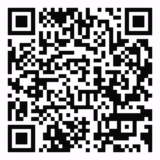Create Decentralized TRC20 Token – Step-by-Step Guide
Introduction
In recent years, decentralized finance (DeFi) has gained significant traction in the blockchain industry. With the rise of cryptocurrencies, businesses are exploring new opportunities to leverage blockchain technology and create their own tokens. One such token standard is TRC20, which is supported by the Tron blockchain network. In this step-by-step guide, we will walk you through the process of creating your own TRC20 token and delve into the world of decentralized finance.
1. Introduction to TRC20 Tokens and Decentralized Finance (DeFi)
Understanding TRC20 tokens and their significance in the Tron ecosystem
TRC20 tokens are technical standard tokens supported by the Tron blockchain network. They are an updated version of TRC10 tokens and offer more functionalities. TRC20 tokens play a crucial role in the Tron ecosystem, enabling businesses to create their own decentralized tokens and participate in various DeFi applications.
Exploring the concept of decentralized finance and its benefits
Decentralized finance, or DeFi, refers to the use of blockchain technology and cryptocurrencies to recreate traditional financial systems in a decentralized manner. DeFi offers numerous benefits, including increased accessibility, transparency, and security. By creating a TRC20 token and integrating DeFi features, businesses can tap into the potential of this emerging financial ecosystem.
2. Getting Started with TRC20 Token Development
Overview of TRC20 token development process
The process of developing a TRC20 token involves several steps, including defining the purpose and goals of the token, designing the token economics, developing the smart contract code, integrating DeFi features, launching and promoting the token, ensuring security and compliance, and monitoring and maintaining the token.
Choosing the right platform for TRC20 token development
When it comes to TRC20 token development, it is essential to choose the right platform that offers the necessary tools and resources. Several platforms provide TRC20 token development services, such as Spiegel technologies These platforms offer comprehensive solutions for creating and deploying TRC20 tokens on the Tron blockchain network.
3. Preparing for TRC20 Token Creation
Defining the purpose and goals of your TRC20 token
Before diving into the development process, it is crucial to define the purpose and goals of your TRC20 token. Consider the problem you aim to solve or the value you want to provide to your users. This will help you shape the features and functionalities of your token.
Conducting market research and competitor analysis
Market research and competitor analysis are essential steps in understanding the market landscape and identifying potential opportunities. Analyze existing TRC20 tokens and their use cases to gain insights into what works and what doesn’t. This will help you differentiate your token and create a unique value proposition.
Identifying the key features and functionalities of your token
Once you have defined the purpose and goals of your TRC20 token, it’s time to identify the key features and functionalities that will set your token apart. Consider features like token burning, staking mechanisms, utility models, and governance structures. These features will determine the utility and value of your token in the market.
4. Designing the Token Economics
Determining the total supply and distribution mechanism
Token economics play a crucial role in the success of your TRC20 token. Determine the total supply of your token and the distribution mechanism. Consider factors like inflation, deflation, and scarcity to create a balanced token economy.
Implementing token burning and staking mechanisms
Token burning and staking mechanisms can enhance the value and utility of your TRC20 token. Token burning involves permanently removing tokens from circulation, reducing the total supply and potentially increasing the value of the remaining tokens. Staking mechanisms allow token holders to lock their tokens and earn rewards for participating in the network.
Setting up token utility and governance models
Define the utility of your TRC20 token and how it will be used within your ecosystem. Consider use cases like payment for goods and services, access to exclusive features, or participation in governance decisions. Establish a governance model that allows token holders to participate in decision-making processes and shape the future of the token.
5. Developing the TRC20 Token
Writing the smart contract code for your TRC20 token
The development of a TRC20 token involves writing the smart contract code that defines the token’s functionalities and behaviors. Solidity is the most commonly used programming language for writing smart contracts on the Tron blockchain. Ensure that your code is secure, efficient, and adheres to best practices.
Testing and auditing the smart contract for security and functionality
Before deploying your TRC20 token, it is crucial to thoroughly test and audit the smart contract for security vulnerabilities and functionality issues. Conduct comprehensive unit tests, integration tests, and security audits to identify and fix any potential issues. This will ensure that your token is secure and functions as intended.
Deploying the TRC20 token on the Tron blockchain
Once you have written and tested the smart contract code, it’s time to deploy your TRC20 token on the Tron blockchain. Use tools like the Tron scan tool to install the TRC20 token contract and simultaneously upload the contract code. Ensure that the contract is compiled correctly and deployed to the desired network.
6. Integrating DeFi Features
Exploring the possibilities of DeFi integration with your TRC20 token
DeFi offers a wide range of possibilities for integrating additional features and functionalities into your TRC20 token. Explore options like decentralized exchange (DEX) functionality, lending and borrowing platforms, yield farming, and liquidity pools. These features can enhance the utility and value of your token within the DeFi ecosystem.
Implementing decentralized exchange (DEX) functionality
Decentralized exchanges allow users to trade tokens directly from their wallets without the need for intermediaries. Integrate DEX functionality into your TRC20 token to enable seamless and secure token trading. Consider popular DEX protocols like Uniswap or PancakeSwap for integration.
Enabling lending, borrowing, and yield farming options
Lending, borrowing, and yield farming are popular DeFi activities that can be integrated into your TRC20 token. Enable users to lend their tokens and earn interest, borrow tokens against collateral, and participate in yield farming to earn additional rewards. These features can attract users and increase the adoption of your token.
7. Launching and Promoting Your TRC20 Token
Creating a marketing strategy for your TRC20 token launch
A successful token launch requires a well-planned marketing strategy. Define your target audience, create compelling content, and leverage social media platforms to generate awareness and attract potential users. Consider partnerships, airdrops, and bounty programs to incentivize early adopters.
Building a community and engaging with potential users
Building a strong community around your TRC20 token is crucial for its success. Engage with potential users through social media channels, forums, and community platforms. Provide regular updates, address user concerns, and encourage feedback to foster a sense of trust and loyalty.
Listing your TRC20 token on exchanges and DeFi platforms
Listing your TRC20 token on exchanges and DeFi platforms is essential for liquidity and accessibility. Research and approach reputable exchanges and DeFi platforms that support TRC20 tokens. Ensure that you meet their listing requirements and comply with any necessary regulations.
8. Ensuring Security and Compliance
Implementing robust security measures to protect your TRC20 token
Security is paramount when it comes to token development. Implement robust security measures to protect your TRC20 token from potential attacks and vulnerabilities. Use secure coding practices, conduct regular security audits, and consider implementing multi-signature wallets for enhanced security.
Complying with regulatory requirements and legal considerations
Compliance with regulatory requirements and legal considerations is crucial to ensure the legitimacy and longevity of your TRC20 token. Familiarize yourself with the relevant regulations in your jurisdiction and consult legal experts if necessary. Implement necessary KYC (Know Your Customer) and AML (Anti-Money Laundering) procedures to maintain compliance.
Conducting regular audits and security assessments
Regular audits and security assessments are essential to identify and mitigate any potential vulnerabilities or weaknesses in your TRC20 token. Engage third-party auditors to conduct comprehensive security audits and penetration testing. Stay proactive in addressing any identified issues to maintain the security and integrity of your token.
9. Monitoring and Maintaining Your TRC20 Token
Tracking the performance and adoption of your TRC20 token
Once your TRC20 token is launched, it is crucial to track its performance and adoption in the market. Monitor key metrics like trading volume, liquidity, user activity, and token price. Analyze user feedback and make necessary improvements to enhance the user experience.
Upgrading and improving the token based on user feedback
User feedback is invaluable in improving your TRC20 token. Actively engage with your community, gather feedback, and identify areas for improvement. Implement necessary upgrades and enhancements based on user feedback to ensure the continued growth and success of your token.
Staying updated with the latest trends and advancements in DeFi
The DeFi landscape is constantly evolving, with new trends and advancements emerging regularly. Stay updated with the latest developments in DeFi, including new protocols, governance models, and technological advancements. This will help you adapt and innovate your TRC20 token to remain competitive in the market.
10. Case Studies: Successful TRC20 Token Projects
To further illustrate the potential of TRC20 tokens for business success, let’s take a look at a few real-world examples:
- BitTorrent Token (BTT): BitTorrent, a popular file-sharing platform, launched its TRC20 token, BTT, to incentivize users to share and seed files. The token has gained significant traction and is now widely used within the BitTorrent ecosystem.
- WINk (WIN): WINk is a decentralized gaming platform that utilizes TRC20 tokens for in-game transactions and rewards. The platform has attracted a large user base and continues to grow in popularity.
These case studies highlight the diverse applications and success stories of TRC20 tokens in various industries.
11. Conclusion
Creating your own TRC20 token and exploring the world of decentralized finance can be an exciting and rewarding journey. By following this step-by-step guide, you will be equipped with the knowledge and tools to navigate the TRC20 token development process. Remember to define the purpose and goals of your token, design robust token economics, integrate DeFi features, and ensure security and compliance. Stay engaged with your community, monitor the performance of your token, and continuously improve based on user feedback. Embrace the potential of decentralized finance and TRC20 tokens for your business, and unlock new opportunities in the blockchain industry.


